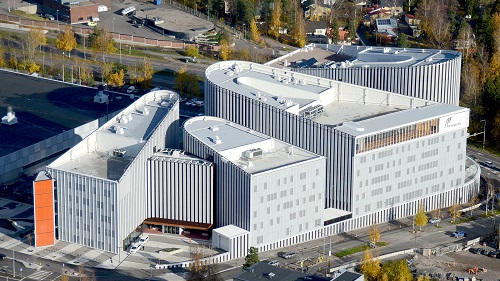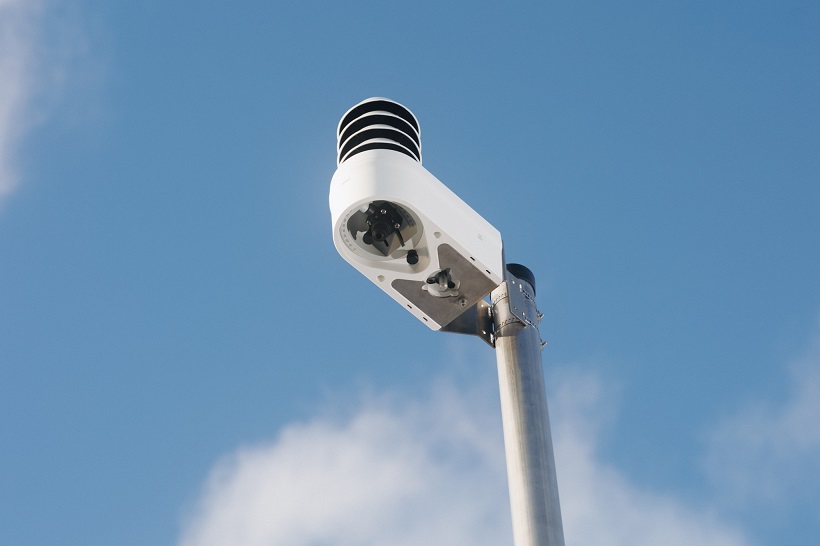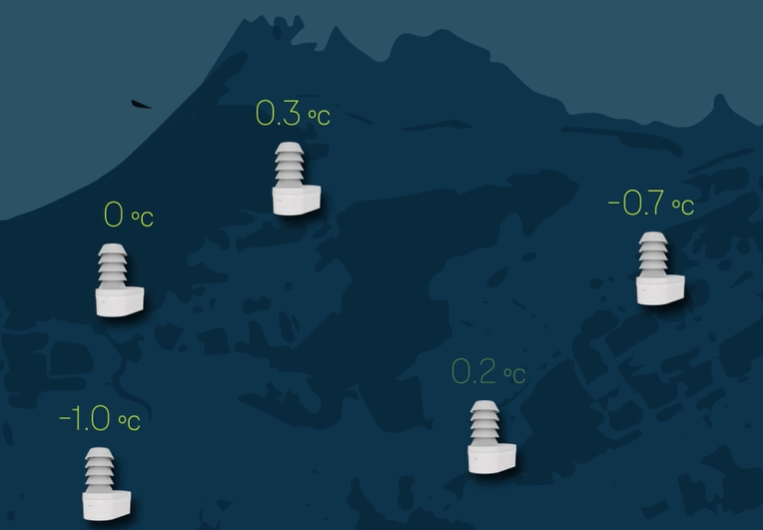Last November, we wrote about an exciting project in cooperation with the City of Helsinki and several other partners to pilot a smart building automation solution that uses hyperlocal weather observations and forecasts. The project runs at the Metropolia University campus building in East Helsinki.
This time, let's dive deeper into how this smart building automation system operates.
HVAC (Heating, Ventilation, and Air Conditioning) systems are essential in modern buildings; they are the key factor in creating a healthy and comfortable working and living environment for occupants. A contemporary challenge is to optimize HVAC systems, making them as energy-efficient as possible without compromising indoor conditions. Situated far north (just 2,000 miles from the North Pole!), Helsinki has this challenge amplified: here heating of the city’s buildings generates more than half of all emissions, making smart energy usage in buildings a top priority. It is also a crucial factor in reaching Helsinki’s goal of achieving carbon neutrality by 2030.
In Helsinki, where heating of the city’s buildings generates more than half of all emissions, making smart energy usage in buildings a top priority.
In Helsinki, where heating of the city’s buildings generates more than half of all emissions, making smart energy usage in buildings a top priority.
Smart building technologies enable buildings to improve energy efficiency. Connected to Building Energy Management Systems (BEMS), smart buildings use technologies like IoT sensors, AI algorithms, and renewable energy sources to optimize energy consumption and cost.
Grid-connected smart buildings can also adapt to changing electricity and energy prices and participate in balancing the energy market for their part.
Smart buildings often use real-time weather observations and forecasts to predictively adjust heating and cooling systems. With intelligent use of forecasted weather, especially temperature, the building itself can be used as a heat storage and unnecessary peaks in indoor temperature can be avoided, simultaneously saving energy. Accurate weather forecasts are also crucial for predicting renewable energy system outputs, facilitating improved grid integration, and reducing reliance on conventional energy sources.
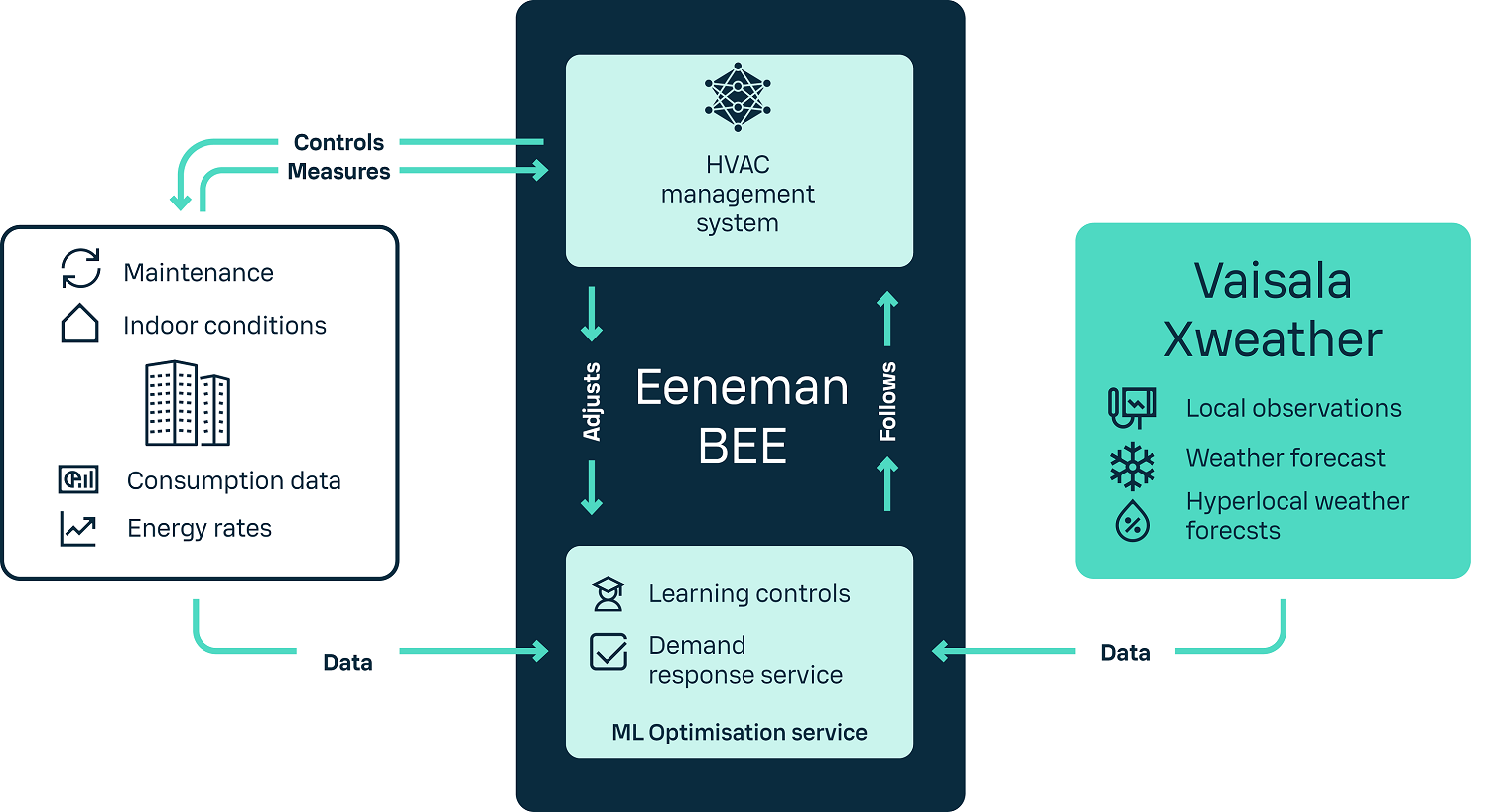
With intelligent use of forecasted weather, especially temperature, the building itself can be used as a heat storage and unnecessary peaks in indoor temperature can be avoided, simultaneously saving energy.
With intelligent use of forecasted weather, especially temperature, the building itself can be used as a heat storage and unnecessary peaks in indoor temperature can be avoided, simultaneously saving energy.
In this project, Eeneman is responsible for the building’s HVAC automation. Their BEE (Building Energy Efficiency) solution incorporates advanced AI technologies directly into building HVAC systems to optimize ventilation, floor heating, and radiator optimization. It utilizes the latest weather forecasts to enhance efficiency. The AI model within the solution is trained meticulously on building energy consumption patterns and weather forecasts. This allows it to adjust HVAC responses for each floor, with a focus on temperature as a critical parameter. Precisely controlling mechanical ventilation based on internal and external temperatures ensures efficient energy usage. The system also incorporates Year-on-Year energy consumption data, ensuring that the BEE AI model provides insightful forecasts for current months and the entire year
The crucial parameter–weather–is brought to the system through Vaisala Xweather’s Xcast technology. Xcast employs machine learning to provide hyperlocal forecasts, trained with precise weather observations from specific locations. This enables the system to continuously learn from local observations, initially implementing smaller gradual changes and more significant adjustments over time as it accumulates more data.
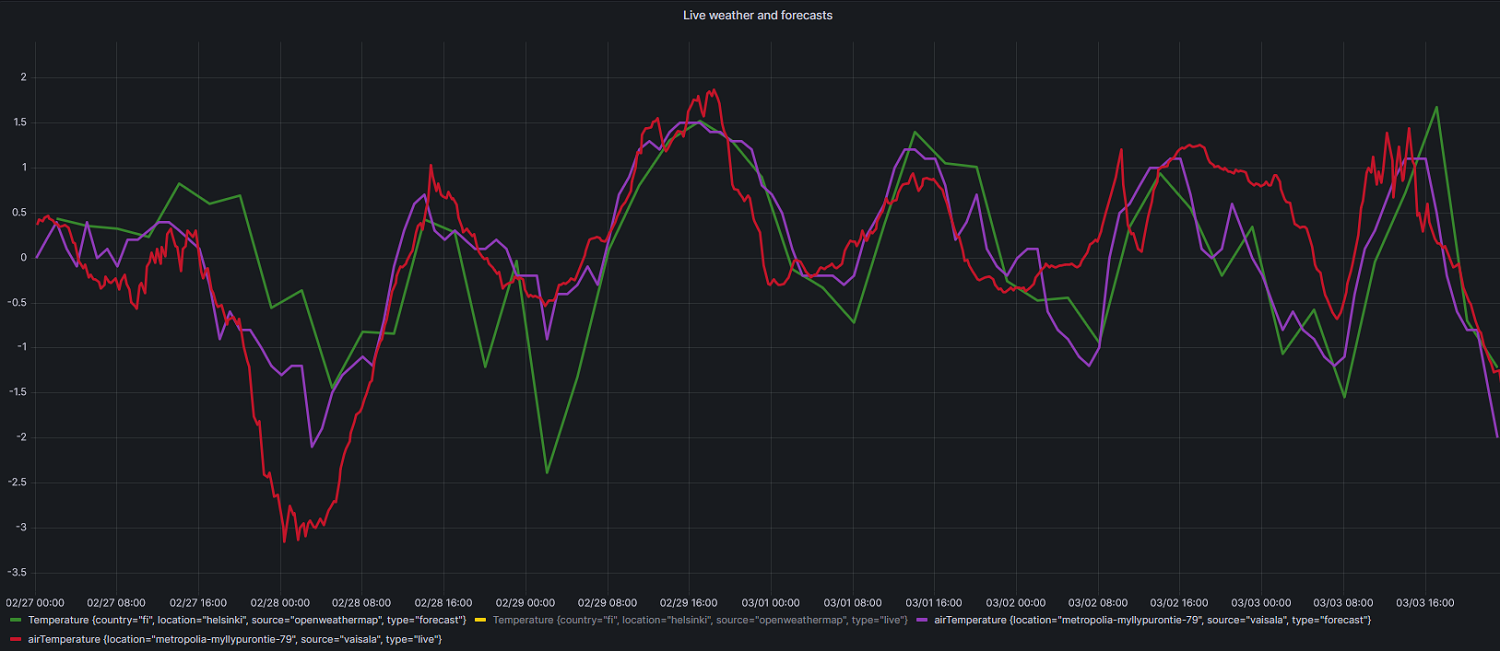
The observed temperature at Metropolia campus (red) and a comparison between an Xcast-powered 6-hour forecast (purple) and a competing forecast (green). The Xcast-powered forecast is consistently closer to the observation than the competing forecast. The graph shows a period between February 27 and March 3, 2024.
This dynamic system incorporates an experience-based response time for each component and heating method, considering factors like floor heating, radiators, and ventilation.
A building’s mechanical ventilation is not only responsible for the indoor temperature but also adjusts based on the speed of exhaust/replacement air, which is modulated by pressure adjustments. This dual-control mechanism enhances the system's ability to adapt to changing indoor conditions.
Furthermore, the demand response service monitors building savings calculations, comparing them against 2023 figures and adjusting for temperature to align with 2024 conditions.
Stay tuned for data on how the improved forecast reduces campus energy consumption later this spring!

